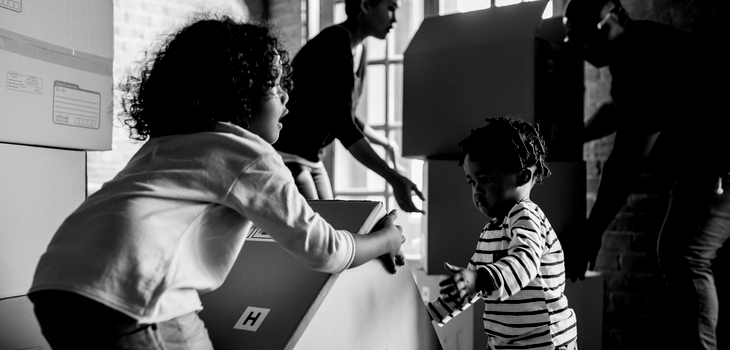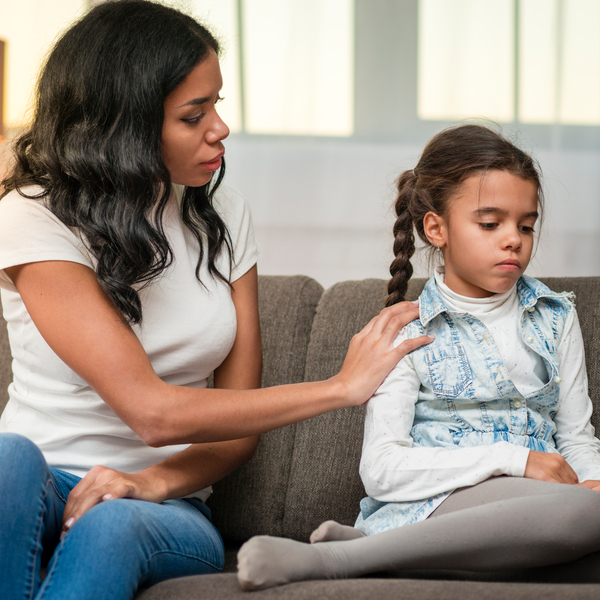Is Moving Bad for a Child? Exploring the Impact of Relocation on Children

Moving to a new home can be an exciting yet challenging experience for anyone, but it can have a profound impact on children. Whether moving is bad for him is complex, as it involves various factors that contribute to a child's well-being, development, and overall happiness. Relocating can provide new opportunities, but it can also disrupt established routines and social connections, potentially leading to emotional and psychological challenges.
Understanding the Impact: Does Moving Affect a Child?
When it comes to family decisions, moving to a new home is a significant one that often prompts the question: Does moving affect a child? The truth is, moving holds the potential to profoundly influence a child's emotional, social, and developmental landscape. In this exploration, we delve into the intricate ways in which moving can impact a kid and how parents can navigate this transformative journey.
Emotional Waves:
The impact of relocation on a youngster's emotional well-being can be likened to a series of waves. Departing from the familiar – friends, schools, and accustomed surroundings – can evoke a range of feelings, including sadness, anxiety, and excitement. Understanding and addressing these emotions lays a critical foundation for aiding them in effectively dealing with the transition.

Social Tides:
For a kid, friendships are more than just companionship – they are integral to their sense of belonging. When a move is on the horizon, the prospect of leaving behind these cherished connections can create ripples of unease. Adapting to new social circles, while navigating the intricate dynamics of forging new friendships, can be both exhilarating and challenging.
Academic Horizons:
Changing schools as a result of a move can set off a chain of adjustments. Educational norms, teaching styles, and curriculum can vary significantly from one school to another. This shift can affect a child's academic trajectory, sparking a journey of adaptation and growth. Parents and educators play a crucial role in smoothing this transition.
Parental Anchors:
The role of parents during this period cannot be overstated. Parents serve as steadfast anchors, providing not only practical support but also emotional guidance. Acknowledging a child's emotions, involving them in discussions, and fostering open communication can help create an environment of understanding and security.
Fostering Resilience:
While moving can be daunting, it can also pave the way for resilience and personal development. Children who experience the ebb and flow of change tend to cultivate adaptability, problem-solving skills, and the ability to face new situations head-on. Over time, these skills become invaluable assets.
How Moving Impacts Children Across Life Stages

The impact of moving on a baby is not a one-size-fits-all phenomenon. Youth of different ages react to relocation in distinct ways, shaped by their developmental stages, coping mechanisms, and emotional resilience. Understanding these age-specific reactions is crucial for parents and caregivers, as it enables them to provide appropriate support during the transition. Let's explore how moving affects them across various life stages.
Infants and Toddlers:
Infants and toddlers might seem unaffected by a move due to their limited verbal communication skills, but they are highly attuned to changes in their environment and routines. The disruption of familiar surroundings can lead to heightened fussiness, sleep disturbances, and clinginess. These young children rely heavily on the consistent presence of their primary caregivers, so any shift in that support system can provoke feelings of insecurity.
Preschoolers:
Preschoolers are more aware of their surroundings and routines, making them susceptible to confusion and anxiety when faced with a move. They might exhibit regressive behaviors like bedwetting or thumb-sucking as a response to the stress.
Preschoolers often develop strong attachments to their homes and the people around them, so leaving their comfort zone can trigger feelings of sadness and apprehension. Parents can help by providing reassurance, maintaining familiar routines, and involving children in the moving process.

Elementary School Age:
Elementary school-aged children are likely to experience a mix of excitement and trepidation about moving. They can comprehend the reasons behind the move better than younger children, but they may also fear leaving friends and the familiar. The thought of starting anew can be daunting, and concerns about fitting in at a new school or making friends may arise. Parents can facilitate the transition by emphasizing the positive aspects of the move, such as new adventures and opportunities to meet different people.
Preteens and Adolescents:
Preteens and adolescents often have the most complex reactions to moving. Their social circles and identities are firmly established, making the prospect of leaving them behind especially distressing. Teens might resent the move, feeling that their lives are being disrupted without their consent. The loss of friends and social networks can lead to feelings of isolation and loneliness.
On the other hand, some teenagers might see moving as a chance for a fresh start and the opportunity to reinvent themselves. Open communication is key during this stage, as it allows parents to understand their teen's concerns and involve them in decision-making.
Supporting Children of All Ages
Regardless of age, some general strategies can be applied to help children cope with the emotional effects of moving:
- Open Communication: Encourage children to express their feelings about the move, and validate their emotions.
- Familiarity: Bring along comforting items from the old home to the new one, helping children establish a sense of continuity.
- Involvement: Include them in decisions about the move, such as choosing their new room's layout or picking out new furnishings.
- Maintain Connections: Use technology to help them stay in touch with old friends and maintain a sense of continuity.
- Explore the New: Highlight the exciting aspects of the new location, whether it's a new park, museum, or activity that the child might enjoy.
Examining the Pros and Cons of Moving for a Child's Well-being

The decision to move is never an easy one, particularly when it involves uprooting a family and relocating to a new environment. Amidst the whirlwind of logistics, emotions, and considerations, parents often find themselves pondering a crucial question: What are the pros and cons of moving for a child's well-being? This exploration delves into the potential advantages and drawbacks of such a significant life transition.
The Pros:
1. Fresh Beginnings and Personal Growth:
Moving offers children a chance to start anew. It can be an opportunity to leave behind any negative associations from their past environment and embrace a fresh chapter. This transition can foster personal growth, allowing to develop resilience, adaptability, and a broader perspective on life.
2. Exposure to Diversity:
Relocating introduces children to diverse cultures, communities, and ways of life. This exposure can expand their horizons, enhance cultural awareness, and nurture empathy for people from different backgrounds.
3. Family Bonding:
The process of moving often requires families to work together as a team. The shared experience of adjusting to a new home can strengthen family bonds, as everyone navigates the challenges and triumphs together.
4. Learning Flexibility:
Moving necessitates flexibility, and children who experience this change learn how to adapt to new situations and environments. This ability can serve them well in their future endeavors.
5. New Opportunities:
A change in location can bring forth new opportunities for educational advancement, extracurricular activities, and personal interests. Access to different schools, clubs, and resources can enrich a child's life in unexpected ways.
The Cons:
1. Emotional Challenges:
Moving can evoke a rollercoaster of emotions in children. Leaving behind familiar surroundings, friends, and routines can lead to feelings of sadness, anxiety, and even a sense of loss.
2. Educational Disruption:
Changing schools disrupts the continuity of education, potentially causing gaps in learning or requiring children to adapt to different academic expectations and teaching methods.
3. Social Adjustment:
Establishing new friendships and adapting to a new social environment can be difficult, particularly for children who are introverted or struggle with making connections.

4. Loss of Support Networks:
Moving often means leaving behind extended family, neighbors, and support systems that children have grown attached to. This loss can impact their sense of belonging and emotional well-being.
5. Stress and Anxiety:
The process of moving, including packing, adjusting to a new home, and settling into a new routine, can generate stress for both parents and children. Children might feel this tension and experience increased anxiety during the transition.
The Role of Parents
Parents play a vital role in shaping how a move affects their children. Open communication, empathy, and support are crucial during this time. Engaging children in the decision-making process, listening to their concerns, and providing emotional reassurance can help alleviate some of the negative impacts.
Whether moving is “bad” for a child depends on a variety of factors, including the child's personality, age, and how the move is handled. While moving can come with challenges, it also offers opportunities for growth and new experiences. By carefully considering the potential pros and cons, and by prioritizing emotional well-being and support, parents can make a decision that best suits the needs of their family and ensures a smoother transition for their children.

Conclusion
In the intricate tapestry of a child's life, the impact of moving is a significant thread that weaves together emotions, challenges, and growth. Parents play a crucial role in shaping their child's experience during a move, offering support, understanding, and stability.
The emotions stirred by moving, the adjustments in social dynamics, and the changes in academics highlight the complexity of this transition. However, within these challenges lie opportunities for personal development and resilience. Children who navigate the process of moving often emerge stronger and more adaptable.
In conclusion, the impact of moving on a child is a nuanced interplay of emotions and changes. By providing emotional support, open communication, and a sense of stability, parents can guide their children through this journey, helping them grow and thrive amidst change.
FAQ

1. How does moving affect a child emotionally?
Moving can evoke a range of emotions in children, including sadness, anxiety, excitement, and even a sense of loss. Leaving behind familiar surroundings, friends, and routines can contribute to these emotional responses.
2. Will changing schools due to a move impact a child's education?
Changing schools can disrupt a child's educational continuity. Different schools have varying curricula, teaching methods, and expectations, which can affect a child's academic progress and self-esteem.
3. How does moving affect a child's social life?
Moving can disrupt a child's social circle, requiring them to make new friends and adapt to a new social environment. This process can be challenging, potentially leading to feelings of isolation or difficulty fitting in.
4. What role do parents play in a child's experience of moving?
Parents play a crucial role in shaping a child's experience during a move. Their emotional support, open communication, and involvement in the decision-making process can help children navigate the challenges of the transition.
5. Can moving have positive effects on a child?
Yes, moving can have positive effects. It can offer children opportunities for personal growth, exposure to new experiences and cultures, and the development of resilience and adaptability.
6. How can parents help their child cope with the emotional challenges of moving?
Parents can help by providing emotional support, encouraging open communication about their feelings, and involving them in decisions related to the move. Maintaining familiar routines and exploring a new environment together can also alleviate emotional challenges.
7. What can parents do to ease the academic transition for their child during a move?
Parents can help by researching the new school, communicating with teachers, and addressing any educational concerns their child may have. Offering extra support with homework and encouraging a positive attitude toward the change can also ease the academic transition.
8. How can parents help their child build new social connections after moving?
Parents can encourage their children to participate in local activities, clubs, and events to help them meet new peers. Organizing playdates or inviting classmates over can also facilitate the process of building new friendships.
Popular Articles

Budgeting Basics: How to Financially Prepare for Your International...

Moving Plants: Step-by-Step Guide to Effortless Plant Relocation

The Best International Moving Companies in Germany

Organic Gardening Methods: How to Grow Your Garden Naturally

6 Best Practices to Streamline B2B Logistics

Instant International Moving Quotes: How Moovick AI Simplifies the ...

